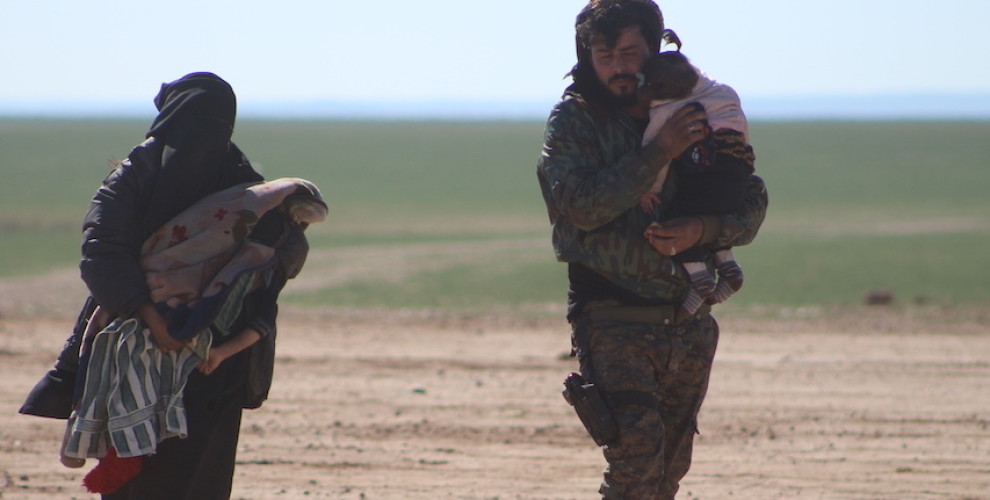The darkness left behind from ISIS
People flee ISIS by their own means, by cars they can find, some with babies in their arms, barefeet, covered in dust, some walking through landmines and many through the safe corridors.
People flee ISIS by their own means, by cars they can find, some with babies in their arms, barefeet, covered in dust, some walking through landmines and many through the safe corridors.

There are some among them who were there until the very end with ISIS gangs. Some were forced as human shields, others volunteered. Among those who were rescued or fled, there are civilians who were with ISIS gangs until the gangs were left with just one village. They are surprised too, as are those who see them.
WHO ARE THESE CIVILIANS?
SDF, YPG and YPJ fighters say they consider them to be civilians. These civilians have been arriving these last few days, and most of them are women and children. They haven’t said one “bad” word about ISIS yet. But they are hungry, their children are hungry, and all of them are exhausted.
A female fighter picks up a small child with dusty clothes and smiles. The child sticks his tongue out. A male fighter is trying to feed a child with a spoon, among women wearing niqabs. Only the children’s faces are visible. The women have fully covered themselves with black cloth.
Further out, a SDF fighter is carrying a child. A woman, apparently the child’s mother, follows as passersby look suspiciously. Her face is not visible. She is carrying another child. People stare: “Was this woman one of those who tortured other women? Why was she there? Why did she run?”
ISIS “REFUGEES” AND “COMMONERS”
We are near the Baghouz village. It’s a desert area. Rescued civilians are checked by SDF and coalition forces. As soon as they step out of the vehicles, the difference in their clothes stand right out. The non-Syrians stand out with their branded clothes and shoes. These civilians are assumed to be the wives of ISIS officers. Under the ISIS administration, there are the Refugee (Multaji) and the Commoner (Avam) classes. The Commoners are locals, who are tasked with serving the Refugees.
During the liberation of Raqqa, women said they couldn’t do anything for fear of the Multajis, dozens of Yazidi women were used to serve them.”
Among the fleeing civilians is Om Sehid, a French woman. She refuses to give her real name: “I won’t say my name, in any case I think people recognize me.”
Om Sehid’s words suggest that she is seen as a criminal in her country. She got out of the Deir Ez Zor deserts. She is only one of the countless contradictions in the war of 7 years.
THIN LINE
An Iraqi woman just arrived with her two daughters. She speaks of why she stayed with ISIS to this day: “My 3 sons and my husband were killed in Baghouz last week.” There are no signs of grief on her face. Another family’s daughter was killed by ISIS, and was buried there. People who went to the area to monitor the migration were brought to tears during the burial, but the family looks unmoved. The horrifying effect of war could be seen for all that it is. Was this shock?
The line between war criminals and victims gets very thin sometimes. And sometimes it can disappear for civilians escaping ISIS.
RELATED NEWS: